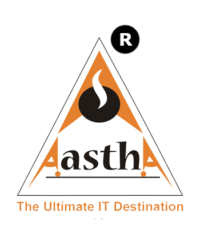Cryptocurrency is a hugely popular investment, particularly for younger people, but for newcomers a lot of the jargon can be intimidating and off-putting. If you don’t know what gas is, or who is a whale, or what the difference is between Bitcoin and blockchain, then it can be a little scary to get started with crypto.
A familiarity with the terms frequently used in this world makes this a lot easier. Whether you’re interested in buying cryptocurrency now or later, knowing the lingo is a good first step. To ensure you are not left out in the cold, here’s beginners guide to launch you into the world of cryptocurrency.
Mining
Sometimes, this term creates a little confusion. It appears as if the coins are produced by blasting mountains. They are not. Mining is the process to create new crypto tokens and put them into circulation. It requires powerful computers to solve complex mathematical equations. Once users do that successfully, they earn coins as a result. They can then trade the coins with their peers directly or through online exchanges.
Of course, most investors don’t actually mine, or generate new tokens. Instead, you can buy and sell tokens from other people, just like you would any other asset in your investment portfolio.
Whale
Those accounts that hold a large amount of a coin and have the capacity to influence the market single-handedly are called whale accounts. Most of the well-known and popular cryptocurrencies have a bunch of whales that can really throw their “weight” around.
In fact, there are even popular sites that track the activity of whales, so that there is more transparency in the cryptocurrency market.
Many whale accounts are early investors, or large funds, and tracking what they’re doing is actually a smart way of trying to figure out how the cryptocurrency market is going to be moving.
Wallet
You store all your cryptocurrency coins in a wallet. It is secured by cryptography and if you ever forget your password you lose all access to your wallet. Cryptocurrency is based on the idea of decentralised distribution, so the only way to do so is by making people responsible for their passwords.
There are two main types of wallets — hot and cold. While a hot wallet is connected to the Internet and makes online trades convenient, a cold wallet is like an offline safe, where you keep your wealth under tight security.
Blockchain
The cryptocurrency trade is largely based on a peer-to-peer network. Blockchain is the digital ledger that stores the details of each cryptocurrency transaction. Since there is no central database and everyone can access the blockchain details from anywhere, there is no threat that a hacker could get access and corrupt the information stored on it.
Gas
It’s the fee you pay to make a cryptocurrency transaction. The fee covers the cost of paying a “miner” (the one who successfully solved the equation and earned a coin) to search and receive crypto for you. Its size depends on how quickly you want the transaction to be done.
Address
The specific destination where cryptocurrency is sent. It’s similar to a bank account but holds the only cryptocurrency. Each address, comprising a set of alphanumeric characters, is used only once to hold crypto assets for high security. This address also helps a recipient prove their ownership of the cryptocurrency sent to them.
Fiat
Mostly, this term is used to compare cryptocurrency to the traditional currency (fiat), which is backed and issued by the government. It gives central banks better control over the economy. Currencies, like the US dollar and the Indian rupee, are fiat money.



Leave a reply